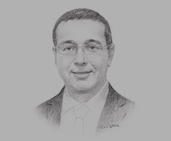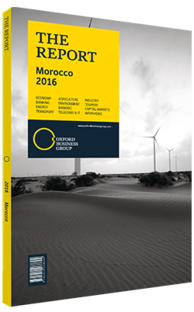Mohammed Boussaid, Minister of Economy and Finance: Interview

Interview: Mohammed Boussaid
What is Morocco’s economic outlook for 2016, and how will a slowing global economy play a role in near-term growth?
MOHAMMED BOUSSAID: Since 2008, Morocco has displayed some resilience and strength. In 2015 the economy expanded at a rate of 4.5%, the stock of foreign currency surged and the macroeconomic environment improved through further liberalisation. We also completed a programme supported by the two-year precautionary and liquidity line arrangement to strengthen fiscal and external buffers. As a result, the public deficit in 2015 reached 4.3%.
However, the environment in 2016 is very different. The global economy is slowing down with an expected worldwide growth of 2.4%, according to the World Bank. These external factors are coupled with negative internal factors, such as low precipitation reducing agricultural output by 9%. Employing 40% of total active population, agriculture plays a major role in balancing internal consumption. However, despite this particularly dry season, the Moroccan economy is set for positive growth in 2016 of slightly under 2%. We are also witnessing a shift towards further industrialisation. Moving away from agriculture-reliant growth, Morocco is witnessing strong growth of industrial exports, averaging 8%. The increase of 13.6% in capital goods purchasing is also a positive sign that investments have been maintained.
How can public debt be stabilised and Morocco’s credit rating be maintained or enhanced?
BOUSSAID: There are three main types of this from the Treasury, public companies and local authorities. With regard to the Treasury debt, under the umbrella of the ministry, it is true that this has been increasing steadily since 2009, at an average rate of 3.8% per year. However, public debt stabilised in 2015 at 63% of GDP. According to the ministry, we will witness a decline starting in 2017. The credit rating for Morocco stands at BBB- with a stable outlook, according to Standard and Poor’s. Our level of debt is therefore acceptable and under control.
Furthermore, Parliament recently passed a law implementing a “golden rule” on public spending: debt will be raised exclusively for the purposes of public investments. With a stable outlook and a legal framework that encourages restraint, Morocco is paving the way for reducing public debt in the upcoming years.
What is the impact of liberalisation and industrialisation on public resources?
BOUSSAID: Morocco has a tradition of openness. Starting in 1996, the country has signed free trade agreements with 56 foreign countries. In the meantime, the economy has been liberalised step by step with the dismantling of monopolies in sectors like telecoms, transport and tobacco. Except for a few products, prices are today set by the market. The recent cut in subsidies for energy products is a new step in our liberalisation policy. It has benefited the economy as a whole and the public budget in particular.
In parallel, the successive governments have followed various industrial plans (the 2008-15 National Pact for Industrial Emergence, the Industrial Acceleration Plan) with the aim of reaching a 23% share of industrial output in total GDP by 2020 against 16% as of 2016. We have been very satisfied with the recent success stories of PSA Peugeot Citroën in Kenitra and Renault in Tangiers. In this regard, Peugeot is set to produce 100,000 cars and motors with a target of 80% local integration. Along with the aeronautics industry, the automotive industry will bring further jobs, income and revenue resources for the government.
You have reached the limit of premium articles you can view for free.
Choose from the options below to purchase print or digital editions of our Reports. You can also purchase a website subscription giving you unlimited access to all of our Reports online for 12 months.
If you have already purchased this Report or have a website subscription, please login to continue.

